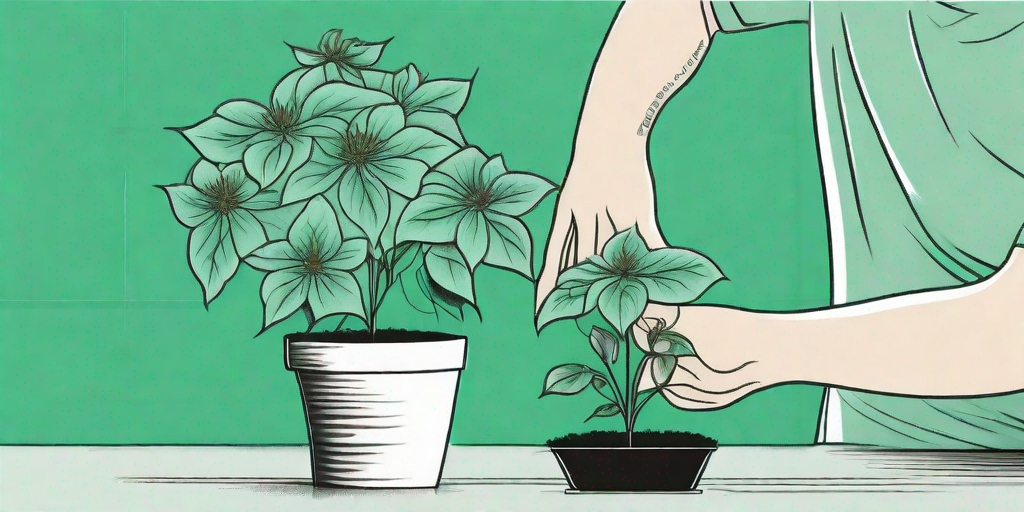
Clematis, the queen of climbers, is a garden favorite due to its vibrant colors and vigorous growth. But what happens when your beloved clematis needs a new home? Fear not, green-thumbed friends, for transplanting clematis is not as daunting as it may seem. With a dash of humor, a sprinkle of cheekiness, and a hearty dose of knowledge, we'll guide you through the process from root to bloom.
The Clematis Conundrum: To Move or Not to Move
Before you start digging, it's important to understand when and why to transplant your clematis. These plants are not particularly fond of moving, so it's best to do so only when necessary. Reasons might include overcrowding, poor growing conditions, or simply a change in your garden design. If your clematis is thriving where it is, consider leaving it be. After all, "if it ain't broke, don't fix it."
Timing is also crucial. The best time to transplant clematis is in early spring or late fall when the plant is dormant. This reduces the shock to the plant and increases the chances of successful transplantation.
Preparation: The Key to Success
Like a well-planned heist, a successful transplant requires careful preparation. The first step is to choose a new location for your clematis. These plants love the sun, but prefer their roots in the shade. Therefore, a spot with at least six hours of sunlight and a bit of shade at the base is ideal.
Next, prepare the soil. Clematis prefers well-drained soil with a neutral to slightly alkaline pH. Enrich the soil with compost or well-rotted manure to provide the nutrients your clematis needs to thrive.
Tools of the Trade
Now that you've chosen the perfect spot, it's time to gather your tools. You'll need a spade for digging, a pair of sharp secateurs for pruning, and a sturdy trellis or support for your clematis to climb on. A pair of gloves wouldn't go amiss either, unless you're fond of dirt under your nails.
Don't forget a wheelbarrow or tarp to transport your clematis. This isn't a time for a piggyback ride, after all.
The Transplanting Tango: A Step-by-Step Guide
With your preparation complete, it's time to get down to business. But remember, transplanting is a delicate dance, not a wrestling match. Treat your clematis with care to ensure a successful move.
First, prune your clematis back to about 12 inches from the ground. This reduces the stress on the plant and makes it easier to handle. Then, dig a wide circle around the plant, taking care to get as much of the root system as possible. Lift the plant gently and place it on your wheelbarrow or tarp.
Next, dig a hole in the new location that is twice as wide and just as deep as the root ball. Place the clematis in the hole, making sure the top of the root ball is level with the ground. Backfill with soil, firming it gently around the roots.
Finally, water the plant thoroughly and provide a support for it to climb on. And voila! You've successfully transplanted your clematis.
Aftercare: The TLC Your Clematis Needs
Transplanting can be stressful for plants, and your clematis will need some tender loving care to recover. Water it regularly, especially during dry periods, and mulch around the base to retain moisture and keep the roots cool.
It's also a good idea to provide a slow-release fertilizer in the spring to give your clematis a nutrient boost. With proper care, your clematis should bounce back and be ready to put on a show in no time.
Frequently Asked Questions
Can I transplant clematis in summer?
While it's possible to transplant clematis in summer, it's not recommended. The heat and dry conditions can cause additional stress to the plant. Stick to early spring or late fall for the best results.
How long does it take for a transplanted clematis to bloom?
It can take a year or two for a transplanted clematis to bloom. Be patient and give your plant plenty of care, and it will reward you with beautiful blooms in due time.
Can I transplant a mature clematis?
Yes, you can transplant a mature clematis, but it may take longer to establish and bloom. As always, careful preparation and aftercare are key to success.
Conclusion
Transplanting clematis may seem like a daunting task, but with careful preparation, gentle handling, and proper aftercare, you can successfully move your plant from root to bloom. So go ahead, don your gardening gloves, and give your clematis the royal treatment it deserves. Happy gardening!















